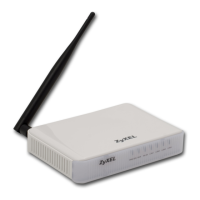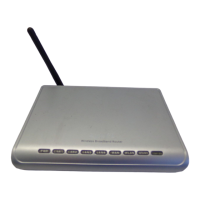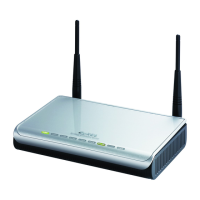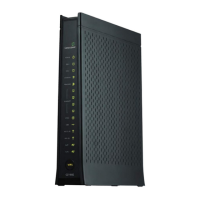Chapter 6 Broadband
PMG5317-T20A User’s Guide
78
802.1p IEEE 802.1p defines up to 8 separate traffic types by inserting a tag into a MAC-layer frame
that contains bits to define class of service.
Select the IEEE 802.1p priority level (from 0 to 7) to add to traffic through this connection.
The greater the number, the higher the priority level.
802.1q Type the VLAN ID number (from 1 to 4094) for traffic through this connection.
MTU
MTU Size Enter the MTU (Maximum Transfer Unit) size for this traffic.
Routing Feature (This is available only when you select IPv4 Only or IPv4 IPv6 DualStack in the IPv4/
IPv6 Mode field.)
NAT Enable Select this option to activate NAT on this connection.
Fullcone NAT
Enable
Select this option to enable full cone NAT on this connection. This field is available only when
you activate NAT. In full cone NAT, the GPON Device maps all outgoing packets from an
internal IP address and port to a single IP address and port on the external network. The
GPON Device also maps packets coming to that external IP address and port to the internal
IP address and port.
IGMP Proxy
Enable
Internet Group Multicast Protocol (IGMP) is a network-layer protocol used to establish
membership in a Multicast group - it is not used to carry user data.
Select this option to have the GPON Device act as an IGMP proxy on this connection. This
allows the GPON Device to get subscribing information and maintain a joined member list for
each multicast group. It can reduce multicast traffic significantly.
Apply as
Default
Gateway
Select this option to have the GPON Device use the WAN interface of this connection as the
system default gateway.
DNS Server (This is available only when you select IPv4 Only or IPv4 IPv6 DualStack in the IPv4/IPv6
Mode field.)
Select Obtain DNS Info Automically if you want the GPON Device to use the DNS server
addresses assigned by your ISP.
Select Use Following Static DNS Address if you want the GPON Device to use the DNS
server addresses you configure manually.
Primary DNS
Server
Enter the first DNS server address assigned by the ISP.
Secondary DNS
Server
Enter the second DNS server address assigned by the ISP.
Tunnel
The DS-Lite (Dual Stack Lite) fields display when you set the IPv4/IPv6 Mode field to IPv6 Only.
Enable Dual Stack Lite to let local computers use IPv4 through an ISP’s IPv6 network. See Dual Stack Lite on
page 74 for more information.
Enable DS-Lite This is available only when you select IPv6 Only in the IPv4/IPv6 Mode field. Select
Enable to let local computers use IPv4 through an ISP’s IPv6 network.
DS-Lite Relay
Server IP
Specify the transition router’s IPv6 address.
6RD
The 6RD (IPv6 rapid deployment) fields display when you set the IPv6/IPv4 Mode field to IPv4 Only. See
IPv6 Rapid Deployment on page 73 for more information.
6RD Select Enable to tunnel IPv6 traffic from the local network through the ISP’s IPv4 network.
Table 8 Network Setting > Broadband > Add New WAN Interface/Edit (Routing Mode) (continued)
LABEL DESCRIPTION

